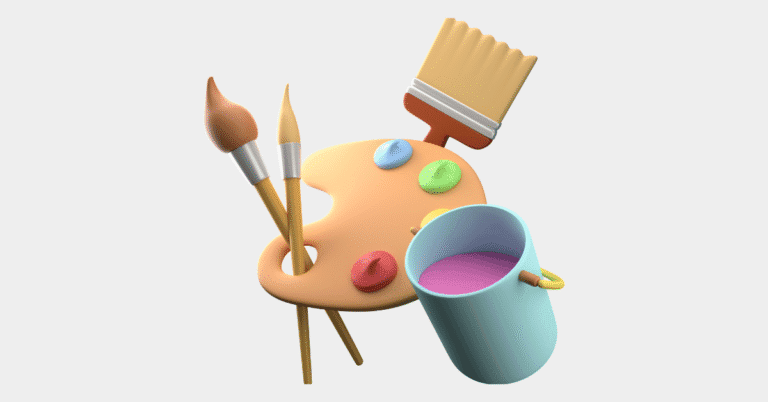In the world of graphic design, color is far more than just a visual component—it’s a psychological tool that can shape perception, evoke emotion, and influence consumer decisions. Whether you’re building a brand identity, creating an ad campaign, or designing a website, understanding the psychology of color gives you a competitive edge.
In this blog post, we’ll dive into the emotional and behavioral impact of different colors and explore how to strategically apply this knowledge to create compelling visuals that engage, influence, and convert your audience.
Understanding the Psychology of Color
Color psychology is the study of how hues influence human emotions, behaviors, and perceptions. Each color has a distinct psychological footprint, triggering specific feelings and associations that can subtly (or dramatically) influence buying behavior.
Let’s explore the most common colors and how they shape consumer perception:
🔴 Red – Passion, Energy, and Urgency
Emotionally associated with: passion, love, excitement, power, energy, and urgency.
Use cases: Often used in food brands to stimulate appetite and create urgency in sales and promotions.
Example: Think of Coca-Cola. The iconic red evokes excitement, happiness, and timeless family moments. Whether it’s a festive commercial or a summer ad, red reinforces the brand’s emotional connection with its audience.
🔵 Blue – Trust, Reliability, and Calm
Emotionally associated with: stability, peace, professionalism, and dependability.
Use cases: Frequently used by tech companies and financial institutions to promote trust and security.
Example: Tech giants like IBM, HP, and Dell use blue logos to communicate reliability and authority.
🟡 Yellow – Optimism, Warmth, and Attention
Emotionally associated with: joy, optimism, energy, fun—but also caution (as in warning signs).
Use cases: Perfect for brands aiming to project happiness, friendliness, and a fun experience.
Example: McDonald’s pairs yellow with red to evoke joy and appetite—an intentional emotional trigger designed to attract families and children.
🟢 Green – Nature, Growth, and Wellness
Emotionally associated with: freshness, health, prosperity, and eco-consciousness.
Use cases: Ideal for health-related brands, eco-friendly products, or anything connected to nature and well-being.
Example:
- Starbucks rebranded its logo from brown to green in 1987, aligning with feelings of balance, healing, and calm.
- Land Rover uses green to reinforce its connection to off-road adventures and the natural world.
🟣 Purple – Creativity, Luxury, and Mystery
Emotionally associated with: imagination, sophistication, royalty, quality, and exclusivity.
Use cases: Popular among premium brands, cosmetics, and tech platforms that want to signal creativity or uniqueness.
Example:
- Milka uses a custom shade of purple, so iconic that it’s trademarked.
- Twitch, Yahoo, and Viber also tap into purple’s creative and modern appeal.
🟠 Orange – Energy, Freedom, and Boldness
Emotionally associated with: excitement, adventure, enthusiasm, and vitality.
Use cases: Great for brands wanting to stand out, show playfulness, or attract a youthful audience.
Example:
- Harley-Davidson uses orange to reflect freedom and raw energy.
- Other brands like Fanta, JBL, and Nickelodeon harness orange’s vibrancy to appeal to fun-loving consumers.
🌸 Pink – Playfulness, Femininity, and Sensitivity
Emotionally associated with: softness, kindness, charm, gratitude, creativity, and emotional warmth.
Use cases: Frequently used by beauty brands, female-focused products, or those targeting emotional appeal.
Example:
- Barbie, Benefit Cosmetics, and Cosmopolitan use various shades of pink to reflect energy, charm, and femininity.
Applying Color Psychology in Design Strategy
Understanding how colors influence perception is one thing. But applying this knowledge strategically in design is where the magic happens.
Here’s how to make color psychology work for your brand:
1. Align with Your Brand Personality
Choose a color palette that reflects your core values, tone, and target audience. A playful brand may benefit from vibrant hues, while a high-end brand might opt for dark, sophisticated tones.
Consistency is key—sticking to a unified color scheme strengthens brand recognition and trust over time.
2. Create Emotional Connections
Colors can serve as a shortcut to emotional response. Use them deliberately to stir feelings:
- Warm colors (red, orange, yellow): urgency, energy, optimism
- Cool colors (blue, green, purple): calm, trust, creativity
Strategically placed color can guide users toward emotional engagement, increasing time spent and action taken.
3. Highlight Calls to Action (CTA)
Use contrasting colors to make your CTA buttons pop. Green and blue are popular for encouraging clicks due to their calming, trustworthy connotations.
Avoid using red for CTAs unless it aligns with your branding—red can signal danger or caution, which might reduce conversions in some contexts.
Pro Tips for Effective Color Use in Design
Here are a few additional best practices to enhance your visual communication through color:
✅ Consider cultural context – A color’s meaning can vary dramatically across cultures. Do your research if your brand operates internationally.
✅ Use color schemes wisely – Combine complementary, analogous, or monochromatic color schemes to create visual harmony and balance.
✅ Test and optimize – A/B test your color choices (especially for CTAs and landing pages) to see which combinations yield the best results.
The Future of Color in Design
As design trends evolve, colors will continue to play a crucial role in creating standout visuals. From gradient overlays to minimalist palettes, designers are exploring creative ways to use color to captivate modern audiences.
Tools like Adobe Color, Coolors, and Material Palette make it easy to experiment with modern palettes and preview color interactions.
Final Thoughts
Mastering the psychology of color allows designers and marketers to craft visuals that don’t just look good—but feel right. By intentionally selecting and combining colors based on psychological principles, you can drive deeper engagement, build stronger brand recognition, and encourage the behaviors you want from your audience.
Ready to make color psychology part of your brand strategy?
Use what you’ve learned here to craft color-driven experiences that are both meaningful and effective. The right palette can turn browsers into buyers—and first impressions into lasting impressions.
Ready to harness the power of color in your brand?
Let our design and branding team help you choose the right color palette that speaks directly to your audience.
Contact Us for a Free Consultation

